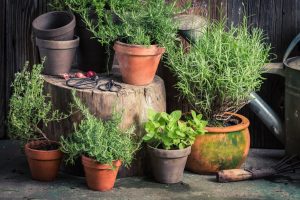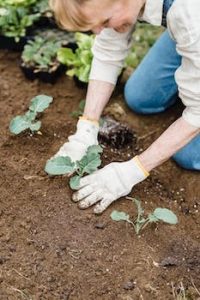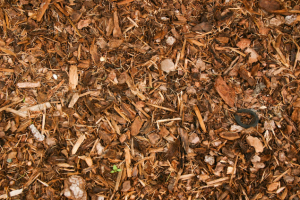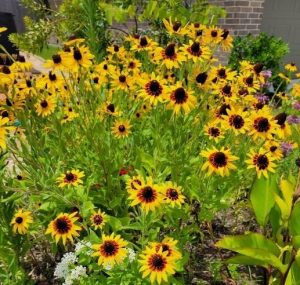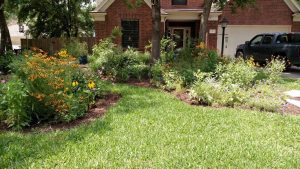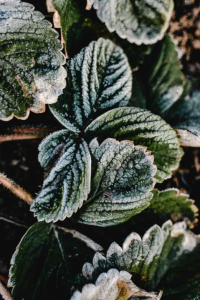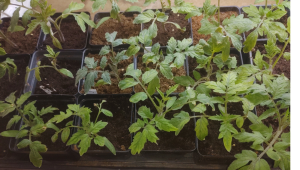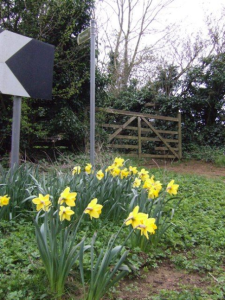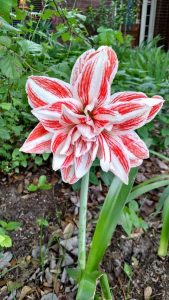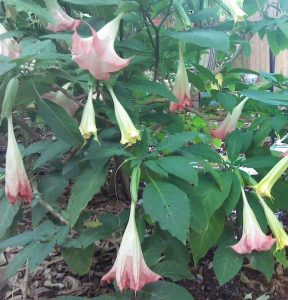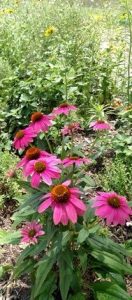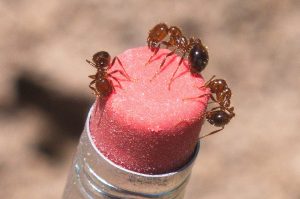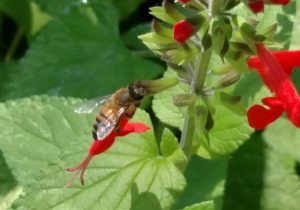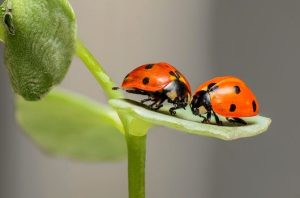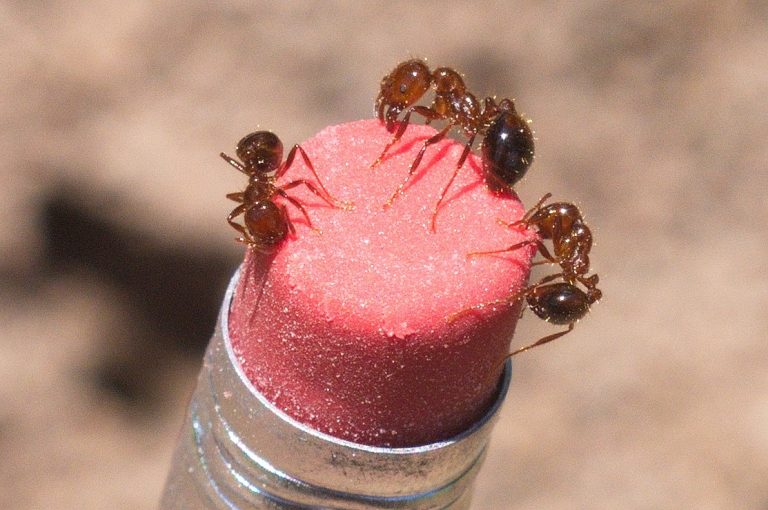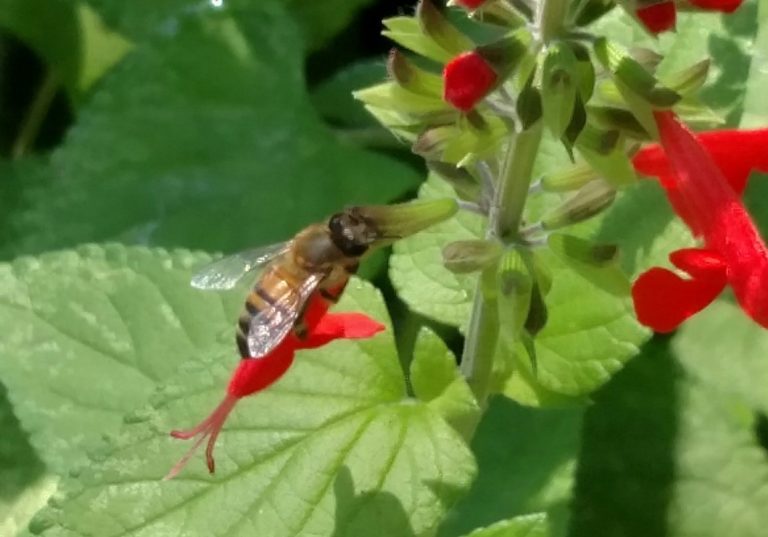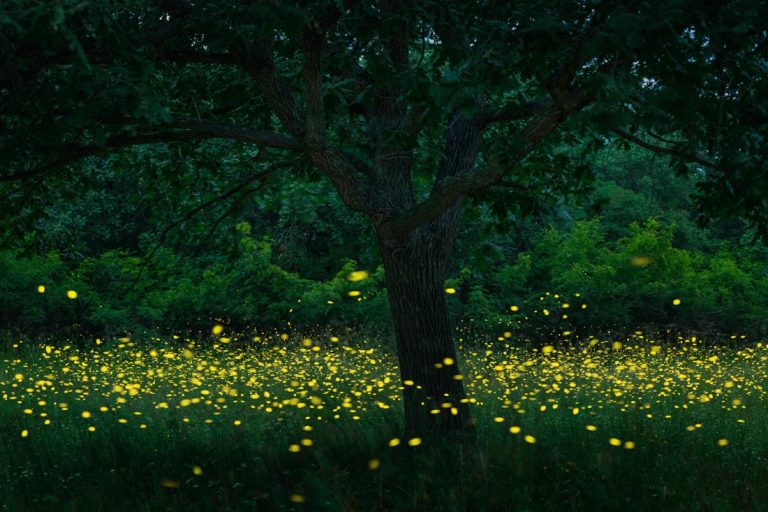Soil scientists now realize that tilling interferes with the soil’s complicated relationship and the micro-organisms that keep the ground healthy and productive. Tilling also compacts the soil, brings long-dormant weed seeds to the surface sale, and adds to erosion.
Gardeners who practice the “no-till” method never disturb the bed once it is established. Instead, they add amendments like compost, manure, peat, lime, and fertilizer to the top of the bed. Water and the micro-organisms in the soil pull the nutrients down into the subsoil. Instead of weeding, they use a mulch to prevent weeds from germinating. The results of “no-till” gardening are good, spongy soil, rich in micro-organisms and beneficial fungi. This allows the roots of young seedlings to penetrate through the soil.
Aeration and Drainage
Earthworms, mycorrhizal fungi, and other soil organisms are keys to good soil structure. Worm tunnels provide drainage. Their excretions help fertilize the soil and bind the soil to provide for aeration. Gardeners who practice the no-till process say that their vegetable plots are freer of diseases and pests.
Water Savings
Adequate layers of mulch allow water to pass through into the soil while shading the ground, keeping it at a more constant temperature. This is especially important along the Upper Gulf Coast, where the late spring sun beats down mercilessly on garden beds. The mulch also prevents evaporation and helps create a moist growing environment.
Less Weeding
Most garden beds contain weed seeds that stay dormant until they become exposed to sunlight. Dormant weed seeds will remain dormant indefinitely in no-till gardens. Gardeners can easily remove the few weeds carried in by the wind or birds.
Saves Time and Energy
Some gardeners till with a shovel, turning over the soil one scoop at a time. Others use gas-powered tillers. Leaving the roots of plants in the soil adds to the organic content. No-till gardeners save time and energy money and sore backs.
Keep The Carbon in The Soil
Good soil has a great deal of carbon. Humus, compost, and other decaying organic matter provide that and other carbon-dependent nutrients to plants, and tilling the soil speeds up the breakdown of organic matter. When this happens, it releases the nutrients too quickly, increasing the need for more fertilizers. Efficient plant growth requires a slow, steady release of nutrients. No-till gardening promotes this process.
Earthworm Population
Soil without earthworms tends to be poor soil. A good earthworm population in garden soil is a good indication that the earth is healthy. Earthworms create tunnels that help water and air filter deeply into the ground. Tilling destroys these structures. Also, earthworm excretions (called worm castings) are extremely rich in desired micro-organisms and nutrients.
Reduces Erosion
The no-till method reduces erosion. It increases the carbon in the soil, which helps prevent fertilizers and topsoil from being washed away.
Types of mulches
Since mulch is such an essential component of no-till gardening, it’s necessary to know what types of mulches work best. First, remember that mulch and compost are not the same things. Mulch is organic matter that has not yet become compost.
- Straw provides excellent mulching material, as opposed to hay, which may have weed seeds.
- Pine straw: don’t curse the pine needles in your yard. Save them for mulch. Many municipalities and homeowners are using pine straw. It degrades slowly and, therefore, has a longer life than many other mulches.
- Leaves: A great source of carbon and other nutrients. After all, the largest amount of all nutrients in a plant are in its leaves. There are two easily-fixed problems with leaves. They sometimes tend to mat, and they tend to blow away. Spreading leaves in thin layers and sprinkling a little soil on each layer will prevent both these problems.
- Newspaper: Since paper is made of wood, these are good sources of carbon. However, newspapers tend to blow away. As with leaves, sprinkle soil between each layer.
- Seaweed: Seaweed has a large number of trace minerals that plants need. Slugs don’t like it, so it acts as a slug repellant as well.
Gardeners who want less strenuous work, good vegetable production, and continuous soil health might want to give no-till gardening a try.
BT




